As North America’s largest documentary film festival unfolds from April 25 to May 5, I’ll cover a selection of standout titles daily, highlighting films that resonate with contemporary global issues and compelling personal stories. You can follow my English-language capsule reviews below, which are updated each day of the festival. In addition, my French-language radio segment Chronique de Cinéma on Dans la Mosaïque (CBC/Radio-Canada) will be dedicated to the festival over the next two weeks, offering commentary and reflections for francophone audiences in Toronto and beyond.
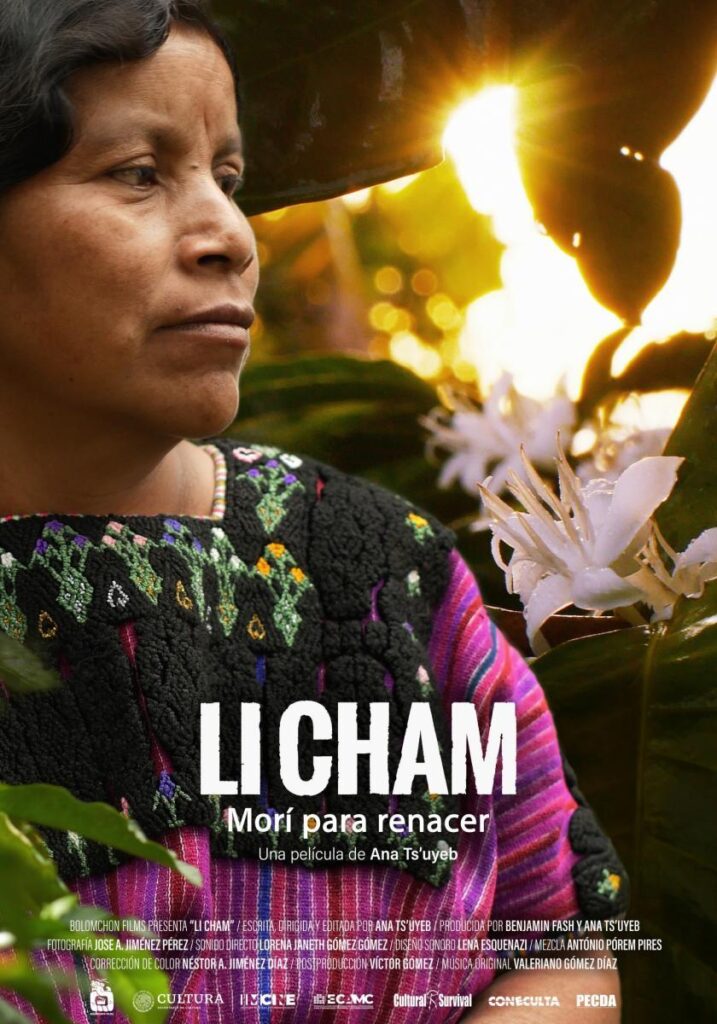
I Died (Li Cham) (2025)
Directed by Ana Ts’uyeb
In I Died (Li Cham), Ana Ts’uyeb crafts a quiet yet powerful meditation on Indigenous womanhood, survival, and political awakening in the Zapatista territories of Chiapas, Mexico. Centering on three Tsotsil Maya women—her mother Margarita, her godmother Juana, and a younger woman, Faustina—the film reveals intergenerational experiences of violence, labor, and resistance, told in their native language through reflective voice-overs layered with intimate, everyday images.
The title draws from the women’s haunting testimonies of psychological and physical death—of being silenced, beaten, or pushed beyond endurance, particularly during pregnancy. Yet from these stories emerges not only pain, but also a deeply rooted spirit of renewal. Through the lens of Zapatista ideology, which reclaims both land and dignity, the film traces a path from erasure to self-determination. We see how the movement’s principles of gender equality begin to reshape lives: land is no longer passed only to sons. Women like Margarita now own and cultivate their own coffee plantations with pride.
Shot with great sensitivity and aesthetic care, Li Cham moves between voices—sometimes unnamed, sometimes overlapping and confusing the voices ownership—creating a collective portrait of memory and rebirth. The beauty of the cornfields, embroidered fabrics, and shared labor contrast with the weight of patriarchal oppression, offering not resolution, but the quiet persistence of life beyond violence.
Both a political testimony and an act of cultural preservation, I Died (Li Cham) affirms the voices of Tsotsil women who, despite all they’ve lost, continue to live—and to fight—for autonomy, land, and joy. ![]() (4/5)
(4/5)
Walls – Akinni Inuk: The Human on the Other Side (2025)
Directed by Sofie Rørdam and Nina Paninnguaq Skydsbjerg
Walls – Akinni Inuk: The Human on the Other Side is a quietly powerful and deeply human documentary that emerges from an extraordinary relationship formed inside a Greenlandic prison. When directors Sofie Rørdam and Nina Paninnguaq Skydsbjerg were granted access to the correctional facility in 2017, they distributed small cameras to inmates—inviting them to document their own lives from the inside. Among them is Ruth, a woman incarcerated for over 10 years, whose complex story of trauma, survival, and endurance unfolds gradually through the filmmakers’ long-term engagement.
While the prison ultimately confiscated the cameras, Nina, who narrates the film, continues to follow Ruth’s story with extraordinary intimacy and care. The documentary becomes more than a portrait of incarceration: it is a shared space of emotional healing. Nina, grieving the loss of her own mother during the making of the film, finds in Ruth an unexpected mirror. Ruth’s testimony—of growing up surrounded by abuse, of acting out of pain and unresolved violence—forms the emotional core of the film. Her legal appeal becomes a turning point, with Nina accompanying her to court, translating proceedings from Danish (which Ruth does not understand).
Spoken in Greenlandic, the film is not only a story of injustice and institutional failure, but of connection, resilience, and mutual recognition. Through an evolving five-year relationship captured on camera, Walls – Akinni Inuk moves beyond the prison walls to examine what it means to listen, to be present, and to help one another find freedom from male abuse and social violence—literal and emotional—on both sides of the fence. ![]() (4/5)
(4/5)
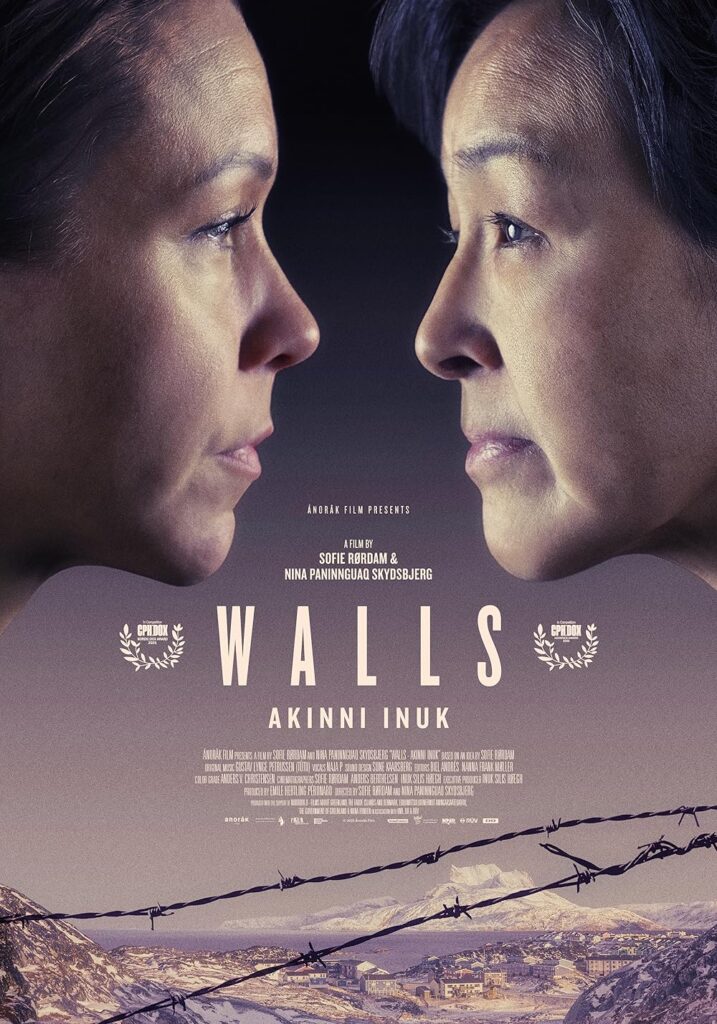

The Dating Game (2025)
Directed by Violet Du Feng
The Dating Game is a smart, intimate, and at times delightfully humorous portrait of modern love in post–One-Child Policy China. Directed by Violet Du Feng, the film follows Hao, a charismatic and pragmatic matchmaker with over 3,000 clients—mostly working-class men who struggle with dating in a society transformed by rapid modernization, shifting gender dynamics, and the omnipresence of social media.
Through Hao’s mentorship of three single men in their late twenties and early thirties, the film offers a sensitive exploration of masculinity, loneliness, and the generational rupture created by China’s urban migration. Some of these men—raised in rural settings, often by grandparents while their parents sought work in the cities—are emotionally stunted and socially isolated, unsure of how to navigate intimacy or even construct a dating profile. Hao—whose wife, Wen, is also a matchmaker—guides men through the illusions of romantic idealism, while Ming encourages women to adopt more “realistic expectations.” Though working in opposite directions with contrasting strategies, both face resistance and moments of quiet irony along the way.
What emerges is a layered and empathetic depiction of a society in flux, where emotional vulnerability is both a liability and a quiet longing. Du Feng skillfully balances observational humor—such as scenes of parents gathering in public parks to arrange matches for their adult children—with poignant insights into how social and economic change has left many behind in their search for connection.
Grounded in character, culturally rich, and refreshingly honest, The Dating Game is both a revealing sociological study and a deeply human film about what it means to be seen, wanted, and loved in contemporary society. ![]() (4/5)
(4/5)
Parade: Queer Acts of Love & Resistance (2025)
Directed by Noam Gonick
Parade: Queer Acts of Love & Resistance is an informative and archival-rich documentary that traces the long and multifaceted history of LGBTQ+ activism in Toronto. Directed by Noam Gonick, the film offers an academic and testimony-driven account of queer political struggles in Canada, focusing not just on pride parades but on the broader movements for legal recognition, social justice, and cultural visibility across diverse communities—including Black, Latinx, and Indigenous 2-Spirit voices.
Structured around numerous talking-head interviews—at times visually static, repetitive, and overly reliant on testimony—the film is nonetheless enriched by an impressive array of archival photos, videos, and media coverage. Together, these elements construct a valuable, if occasionally dense and uneven, portrait of queer resistance. However, the lack of clear temporal markers and dated references makes it difficult to follow the chronology of major historical shifts, from early liberation movements to the AIDS crisis and beyond.
While the film succeeds in highlighting solidarity across communities and the emotional and political weight of protest, it stops short of offering a critical reflection on the commercialization or depoliticization of Pride itself. One is left wishing for a deeper interrogation of the evolving meaning of queer public visibility—particularly as parades become increasingly corporate and less radical.
Still, Gonick’s documentary stands as a committed historical intervention, documenting with care and respect the activism that has shaped—and continues to shape—Canada’s queer landscape. ![]() 3/5
3/5
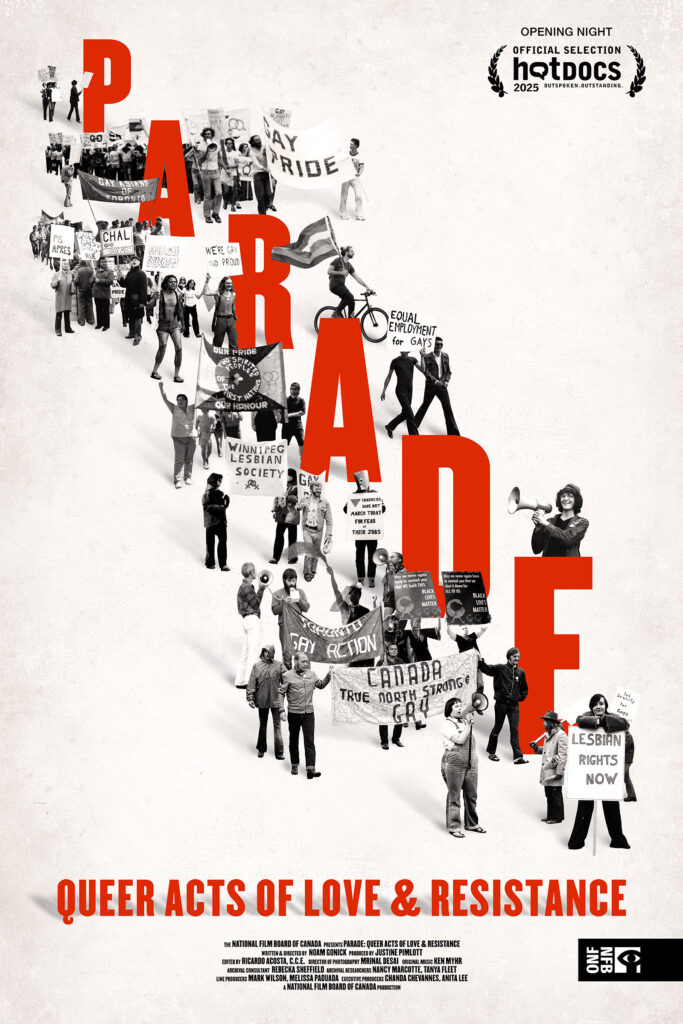
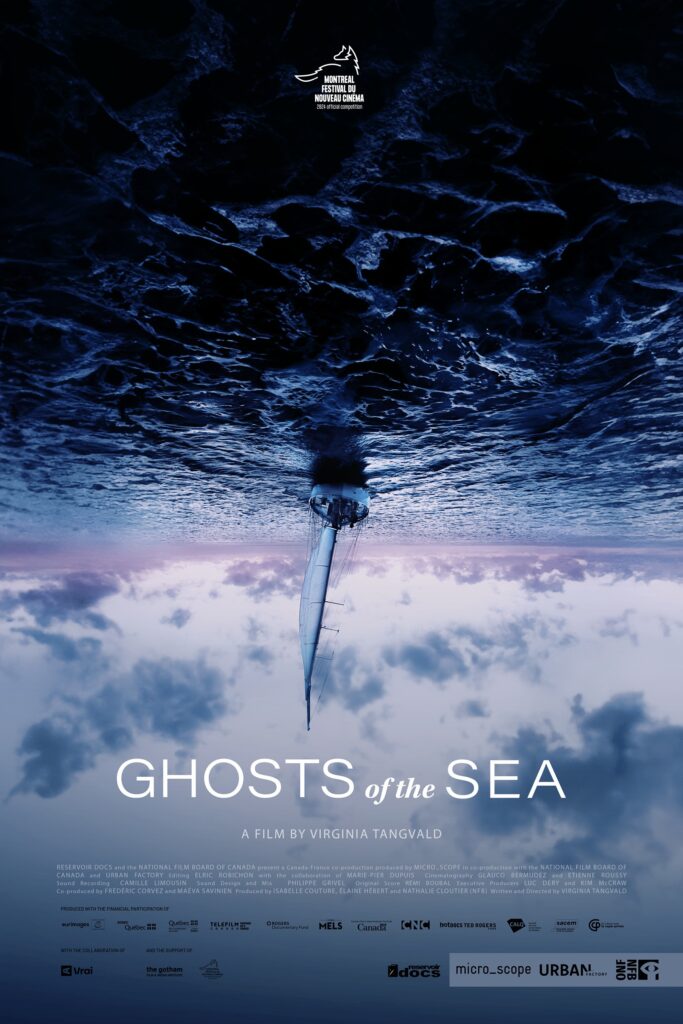
Ghosts of the Sea (2025)
Directed by Virginia Tangvald
Ghosts of the Sea is an intimate and at times disorienting documentary that follows filmmaker Virginia Tangvald as she attempts to unravel the legacy of her father and brother, both experienced navigators who vanished at sea under tragic and mysterious circumstances. Raised aboard a boat until the age of two, Tangvald now revisits her past through interviews with family and friends, seeking to understand the men who shaped her life—and whose deaths continue to haunt it.
The film’s strength lies in the director’s emotional access and comfort with her interviewees, which results in a number of revealing and vulnerable exchanges. Yet the storytelling is structurally uneven. The narrative jumps back and forth in time, and while this fragmentation might mirror the chaotic nature of grief and memory, it often undermines coherence. At times, the film feels caught between an ambitious, layered portrait and an overly simplified one—resulting in a structure that feels both dense and oddly underdeveloped.
Still, Ghosts of the Sea manages to convey the complexity of familial loss and the mythic pull of the ocean, creating a mood that is as melancholic as it is elusive. Though imperfect in execution, it offers a moving reflection on absence, legacy, and the stories we inherit but never fully understand. ![]() 3/5
3/5
Unwelcomed (2025)
Directed by Amílcar Infante and Sebastián González Méndez
Unwelcomed is a haunting and timely portrait of the Venezuelan migration crisis—currently the third largest refugee population in the world after Ukraine and Syria—as it unfolds across South America, with Chile portrayed as a nation torn between its promises of refuge and its growing hostility toward newcomers. Filmed primarily in the arid north of the country—more than 1,000 kilometers from Santiago—the documentary follows the precarious journeys of migrants crossing from Venezuela through Bolivia and Peru, only to encounter xenophobia, violence, and abandonment in Chilean border towns.
Told through the fragmented, anonymous voices of migrants—many tired, angry, or resigned—the film avoids personalization to emphasize the universality and invisibility of forced displacement. These testimonies are accompanied by striking visuals: sweeping shots of the desert landscape contrast sharply with the harshness of migrant life and the cold hostility of local communities. The promise once extended by Chile’s leadership has collapsed into suspicion, criminalization, and silence, leaving many undocumented, unwanted, and unsafe. Chile has given way to xenophobic hostility, lack of state protection, and rampant criminalization. “Today, being a migrant means being a criminal,” one voice observes, capturing the film’s prevailing tone of disillusionment.
With an eerie, suspenseful score and a complete absence of nostalgia, Unwelcomed dismantles the romantic vision of Chile once celebrated in the iconic song Si vas para Chile (original title of the film). There is no warmth or welcome here—only movement, resistance, and survival. Though its structure is fragmented, the film forms a resonant whole, revealing a growing humanitarian crisis and calling urgent attention to a system that continues to fail those most in need. ![]() 3.5/5
3.5/5
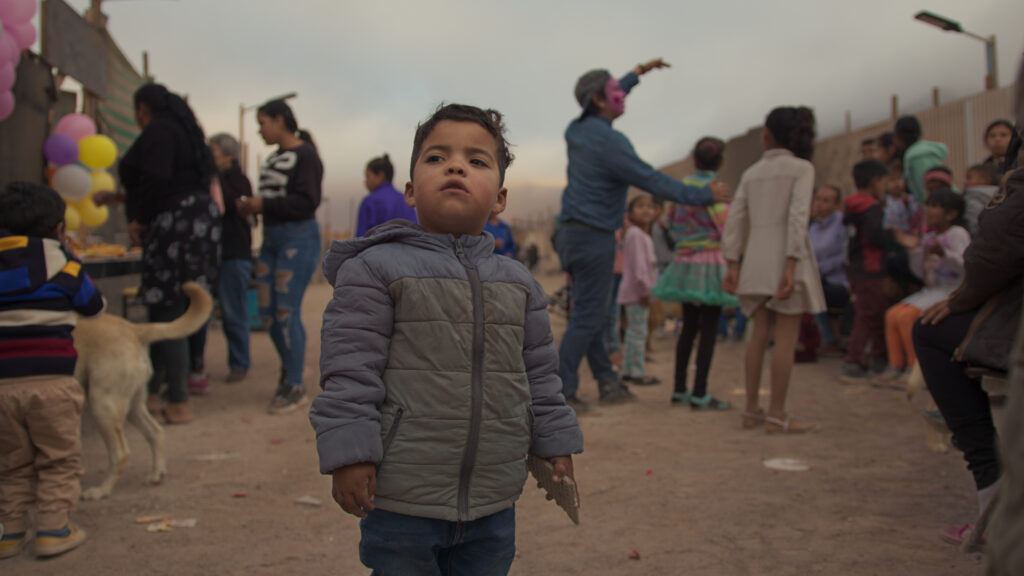
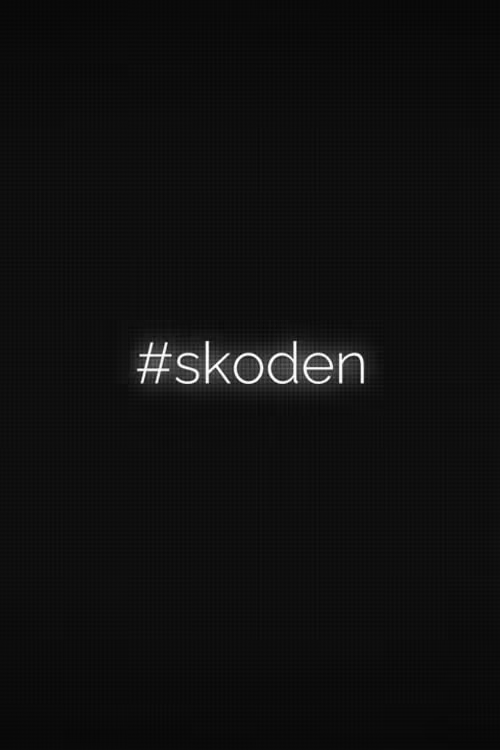
#skoden (2025)
Directed by Damien Eagle Bear
In #skoden, Damien Eagle Bear transforms a viral meme into a moving act of reclamation. What began as a still image of an Indigenous man—Pernell—taken from a YouTube video of him intoxicated and fists raised, becomes the catalyst for a powerful investigation into identity, memory, and systemic failure. The hashtag #skoden, once used playfully or dismissively, is reframed as a symbol of resistance, humor, and cultural survival.
Eagle Bear’s documentary blends intimate interviews with family and friends, community testimony, and personal reflection to trace Pernell’s life beyond the meme. A gentle and complex individual who battled addiction and homelessness, Pernell is revealed as someone shaped—and ultimately broken—by broader colonial structures, including the trauma of residential schools and the inadequacies of urban shelter systems. His story, like those of many Indigenous people in Lethbridge and surrounding Blood Tribe Reserve, is marked by displacement, institutional neglect, racial discrimination, and cultural resilience.
While the film occasionally circles back to familiar points and voices, its emotional core remains potent. It critiques a system that offers services without listening, and paints a portrait of a man who, though vulnerable, was full of joy, stories, and laughter. Even though, sometimes the film can repetitive, #skoden is ultimately not just a film about one man, but a reflection on the ways communities carry pain, humor, and history—and how even a meme can become a site of resistance and remembrance. ![]() 3.5/5
3.5/5
The Secret Lives of My Three Men (2025)
Directed by Leticia Simões
In The Secret Lives of My Three Men, Leticia Simões constructs a deeply personal yet carefully controlled exploration of memory, secrecy, and inheritance. Through reenactments and inventive formal strategies, the filmmaker revisits the hidden lives of three key male figures in her life—her grandfather, her father, and her godfather—each harboring secrets that shaped her identity in ways both visible and buried.
Her grandfather, once close to the notorious cangaceiro Lampião, evokes Brazil’s mythic outlaw past; her father, tied to the repressive SNI during the military dictatorship, embodies a legacy of surveillance and fear; while her godfather’s repressed sexuality and tragic suicide speak to the violence of invisibility in a society where homosexuality was criminalized. The film becomes a collage of intimate histories, reconstructed through stylized interviews in which actors portraying these men—and Simões herself—interrogate the blurred lines between fact and fiction, memory and performance.
While the concept is formally compelling and intellectually ambitious, the film often holds the viewer at a distance. Simões, though central to the narrative, maintains an emotional reserve that keeps her own vulnerability partially obscured. This restraint is symbolized most clearly in her fictionalized conversations with her father, which reveal more about what remains unsaid than what is shared. Despite its emotional opacity, The Secret Lives of My Three Men is a thought-provoking act of cinematic archaeology—a film that probes the personal to illuminate the political, and vice versa. ![]() 3.5/5
3.5/5
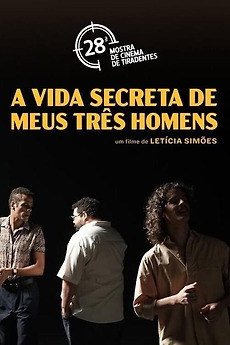
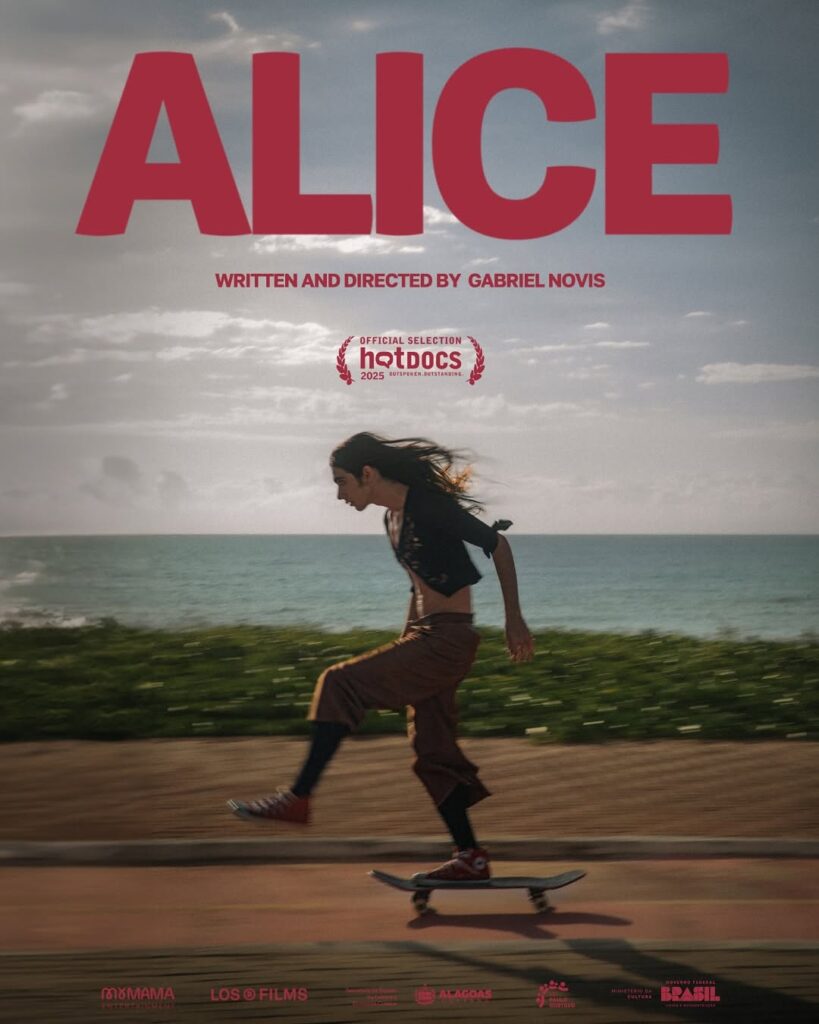
Alice (2025, short doc)
Directed by Gabriel Novis
Gabriel Novis’s Alice is a tender, poetic, and deeply melancholic portrait of a young trans woman navigating identity, grief, and resilience through the act of surfing. Following the suicide of her father, Alice finds in the ocean not only a form of escape but a powerful metaphor for her own process of transformation.
Beyond its intimate revelations about Alice’s journey, the film takes on a larger, urgent resonance, subtly positioning itself as a call against the staggering rates of transgender violence in Brazil—one of the highest in the world. Through home-movie aesthetics, intertwined with family photos and archival footage, Novis creates a lyrical visual language that captures Alice’s search for selfhood with both fragility and strength.
The film’s insistence on slow camera movements, delicate editing, and on-screen texts elevates Alice’s story beyond her identity as a surfer, crafting a meditation on existence, loss, and becoming. Alice is not simply about finding freedom in the waves—it is about carving out space for dignity, memory, and visibility in a world too often marked by erasure and violence. ![]() 3/5
3/5
Plongeurs (2025, short doc)
Directed by Hector Aponysus
In Plongeurs, Hector Aponysus captures the raw energy and quiet desperation of a group of young men in Marseille who find fleeting meaning—and dangerous exhilaration—by leaping from towering cliffs into the sea. Through the exaggerated use of slow motion, Aponysus transforms these reckless, sometimes deadly jumps into moments of unexpected poetic beauty, framing freefall as a kind of physical escape from social disconnection.
Yet the film also raises troubling ethical questions: by focusing so intently on the jumps, it is difficult not to wonder whether the camera’s presence encourages ever-riskier behavior. Does the act of filming, and thus immortalizing, their leaps only intensify the danger?
Despite these concerns, Plongeurs offers a compelling portrait of youth grappling with marginalization, finding in friendship and shared adrenaline a fragile but vital sense of belonging on the edges of the city—and of life itself. ![]() 2.5/5
2.5/5
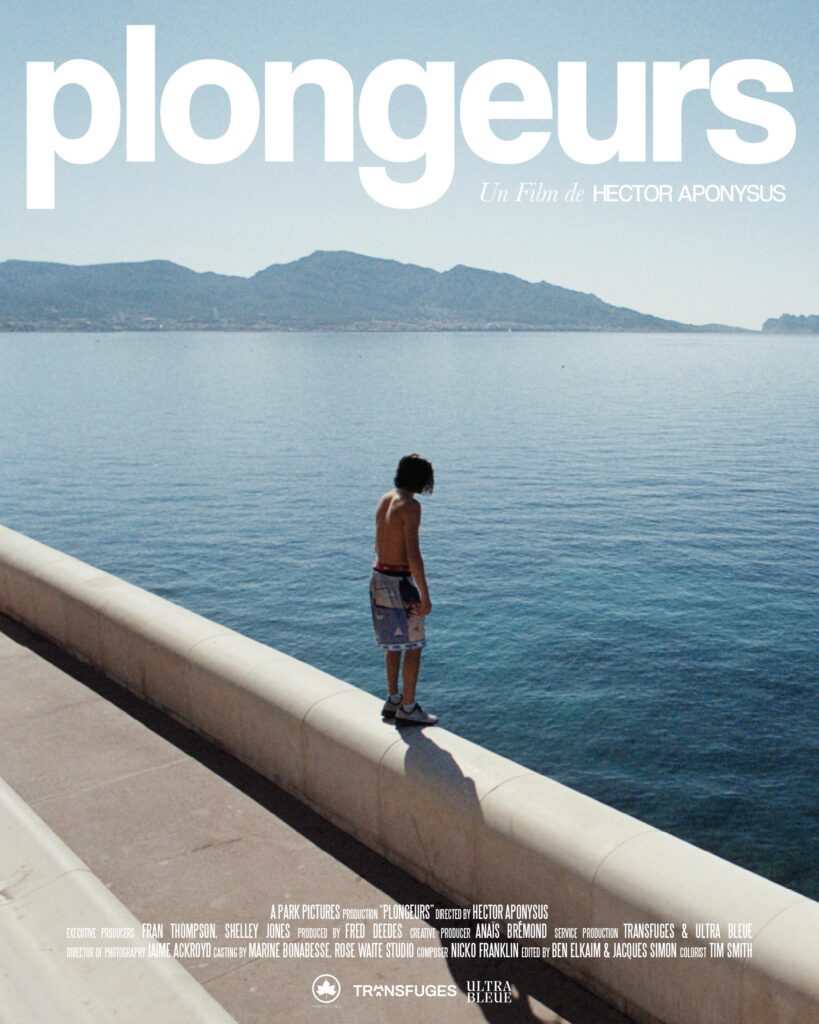
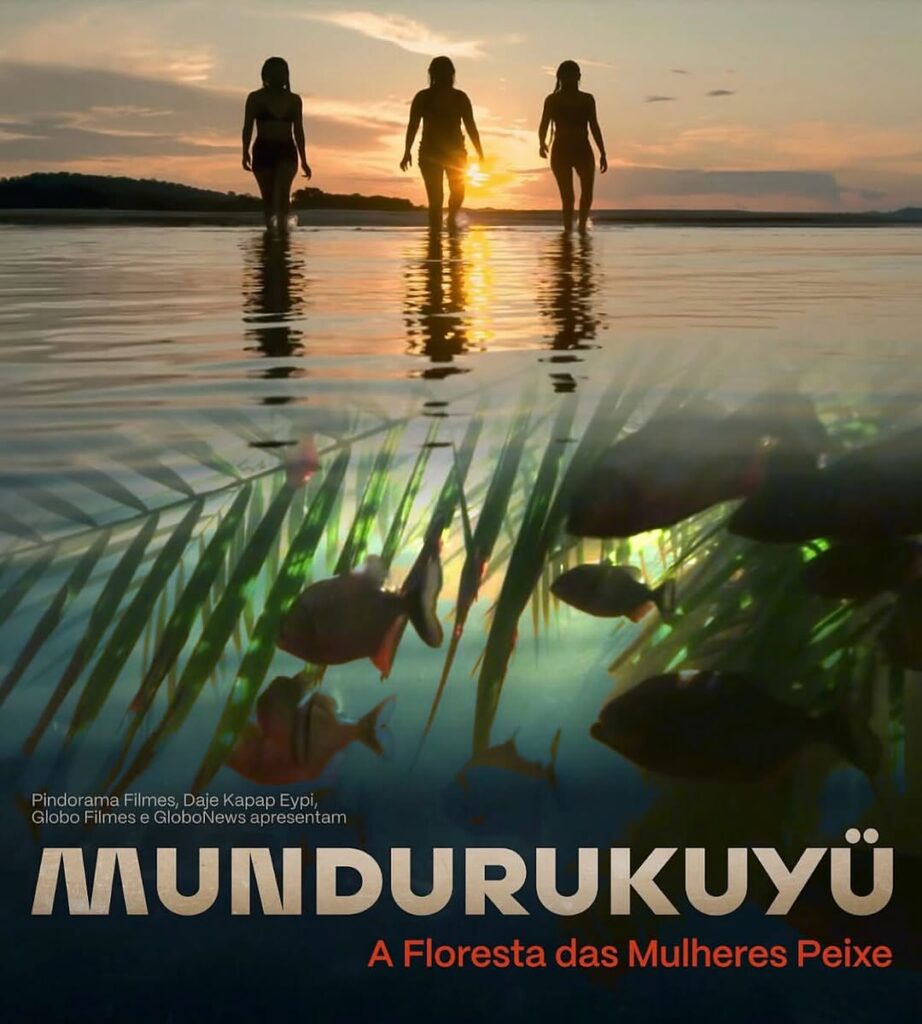
Mundurukuyü – The Forest of the Fish Women (2025)
Directed by Aldira Akay, Beka Munduruku, and Rilcélia Akay
Mundurukuyü is a lyrical and deeply rooted act of cultural resistance, crafted by three female directors—Aldira Akay, Beka Munduruku, and Rilcélia Akay—members of the Munduruku people, an Indigenous community living near the Tapajós River in the Amazon, Brazil. The filmmakers open the documentary by positioning themselves in front of the camera, explaining their intentions and underlining the importance of filmmaking as a tool for cultural preservation, educational formation, and political affirmation.
At once a documentary, a historical archive, and a visual poem, Mundurukuyü invites the elders of the community to recount their stories in their native language, preserving an oral tradition that seamlessly interweaves reality and imagination, brought to life through vibrant animated sequences. The directors not only document their world but embed themselves within it, appearing behind the camera and shaping the narrative from within.
However, the involvement of major corporate media entities such as GloboFilmes and GloboNews—through producers and co-writers like Estevão Ciavatta and a large external production team—raises questions about the film’s authenticity as a purely Indigenous-led project. Despite the directors’ visible authorship, the influence of multinational media structures cannot be entirely overlooked. The cinematography—enhanced by the resources of the Globo production team—is visually stunning, ranging from sweeping drone shots of the Amazonian canopy to breathtaking underwater imagery.
Structured in chapters, the film moves fluidly between oral storytelling, forest rituals, and acts of political resistance. The filmmakers’ physical presence throughout reinforces the collective ethos of the project: storytelling, resistance, and survival are inseparable acts.
Animating the myths of the forest—such as the legend of the women who transformed into fish—and documenting the community’s efforts to protect their territory from miners and loggers, the film asserts the forest as sacred, alive, and intimately bound to human existence–their ancestors became the trees and animals. Rituals like the Tinguejada and the celebration of Indigenous school graduations underscore how education and memory are vital forms of sovereignty and future resistance.
Rich in ancestral knowledge, environmental urgency, and collective consciousness, Mundurukuyü – The Forest of the Fish Women reminds us that to defend the forest is to defend life itself—a profound and necessary lesson in an era desperately searching for reconnection and renewal. ![]() (4/5)
(4/5)
Spare My Bones, Coyote (2025)
Directed by Jonah Malak
This is one of those films that should come with a warning for those who have lived a similar experience: Spare My Bones, Coyote plunges unflinchingly into the raw, perilous reality of migration across the U.S.-Mexico border. Directed with precision and deep empathy by Jonah Malak, the film follows the volunteer group “Águilas del Desierto,” composed largely of Latin American migrants like Ely—who lost his brother and cousin during their own crossings—as they search for the missing: sometimes to save lives, too often to recover the dead.
Eschewing narration and exposition, Malak crafts a starkly immersive experience built on ambient sound, desperate phone calls, and painful testimonies. Cell phones, the fragile lifeline for many migrants lost in the desert, symbolize both hope and despair: a single GPS ping might save a life—or mark the site of another tragedy. Through it all, Ely’s work is captured with urgency and empathy, his every call potentially a race against death.
The film’s title hints at the ever-present menace of the desert’s coyotes—both the animals howling through the night and perhaps the human smugglers profiting from human desperation. Yet some imagery, like the mysterious white light posts in the desert, remains hauntingly unexplained, adding to the film’s atmosphere of uncertainty and dread.
Spare My Bones, Coyote does not moralize or sensationalize. Instead, it confronts viewers with the exhaustion, pain, and courage of those navigating an unforgiving landscape— reminding us that beyond every statistic, there is a voice, a call, and a life too easily lost.  (4.5/5)
(4.5/5)
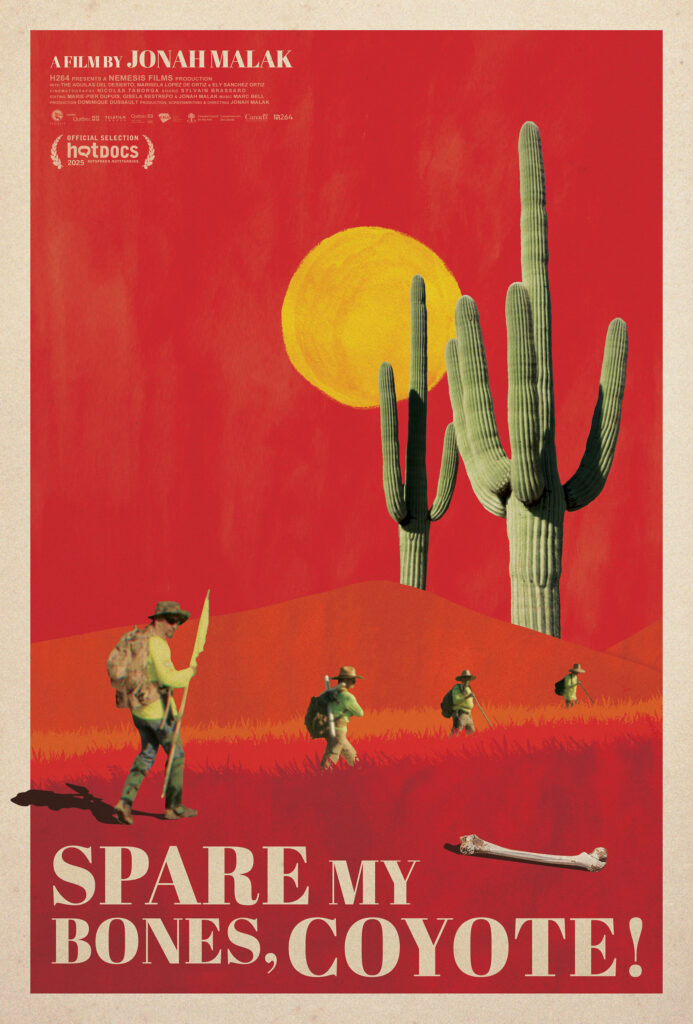
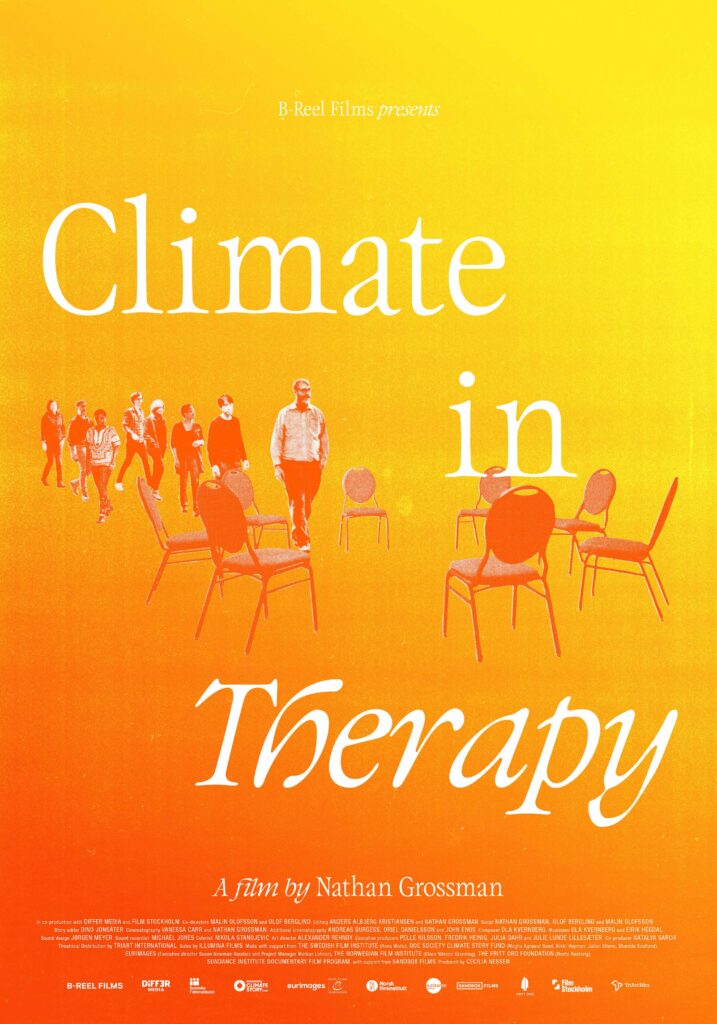
Climate in Therapy (2025)
Directed by Nathan Grossman
Climate in Therapy sets out to explore an urgently needed, rarely addressed dimension of the climate crisis: the emotional and psychological toll on the scientists who dedicate their lives to understanding and communicating planetary collapse. Nathan Grossman follows seven distinguished climate scientists—from institutions like NASA, NYU, and Columbia University—as they engage in a group therapy process led by Dr. Richard Beck. However, despite the film’s noble intentions, the execution feels stifled and at odds with its ambitions.
Employing a cinema vérité approach, Climate in Therapy proposes to observe a group of individuals undergoing a therapeutic process. However, the film oddly instructs participants to behave as if the camera were invisible, never acknowledging its presence. This choice creates an artificial and often frustrating distance: skepticism, denial, and emotional restraint dominate the sessions. While the participants acknowledge their discomfort with the group therapy format itself, the impact of being filmed is never openly addressed, leaving a crucial layer of the experience unexplored. Yet the editing—heavily fragmented and tightly controlled—prevents viewers from fully inhabiting the therapeutic and cinematic space. Moments that hint at vulnerability are abruptly cut short, and the film’s rhythm leans more toward the structure of heavily edited reality television than an immersive documentary experience. Pauses and reactions lose their authenticity, as spatial and temporal fragmentation disrupts continuity, leaving viewers unsure whether emotions and interactions unfolded organically or were shaped in post-production through disjointed, sometimes disconnected comments from the participants.
The participants’ mistrust of the process is palpable, raising unanswered questions about how and why they agreed to take part. While moments of reflection emerge, they rarely deepen into the kind of sustained vulnerability the premise promises. As a result, Climate in Therapy opens a fascinating door onto the emotional lives of climate scientists—only to leave the audience standing outside, catching fragments through a half-closed window. ![]() 2.5/5
2.5/5
Agatha’s Almanac (2025)
Directed by Amalie Atkins
In Agatha’s Almanac, Amalie Atkins crafts a tender, visually rich portrait of 90-year-old Agatha Bock, whose daily life on a narrow three-mile-long farm in rural Canada unfolds with a rhythm as distinctive as the woman herself. Through lush imagery and a tactile sense of detail, the film celebrates Agatha’s quiet resilience and eccentric independence—her strawberry crops, cucumber rows, and duct-taped inventions forming a living archive of personal knowledge and rural wisdom.
Far from a conventional documentary, Agatha’s Almanac places Super 8 aesthetics at the center of its storytelling, allowing the vibrant colors of fruit, earth, and sky to do much of the narrative work.
Yet Agatha does not recount a lifetime of dramatic tales as we often expect in documentaries about the elderly. Instead, what she offers is something rarer: a deeply embodied wisdom and savoir-faire rooted in nature and nurturing. Her life is composed not of grand narratives, but of gestures of care, daily rituals, and an intuitive understanding of how things grow—and how they endure.
Intimate without sentimentality, the film offers a loving meditation on aging, solitude, and the beauty of a life well-tended, where purpose grows as naturally as the crops it nourishes.  (5/5)
(5/5)
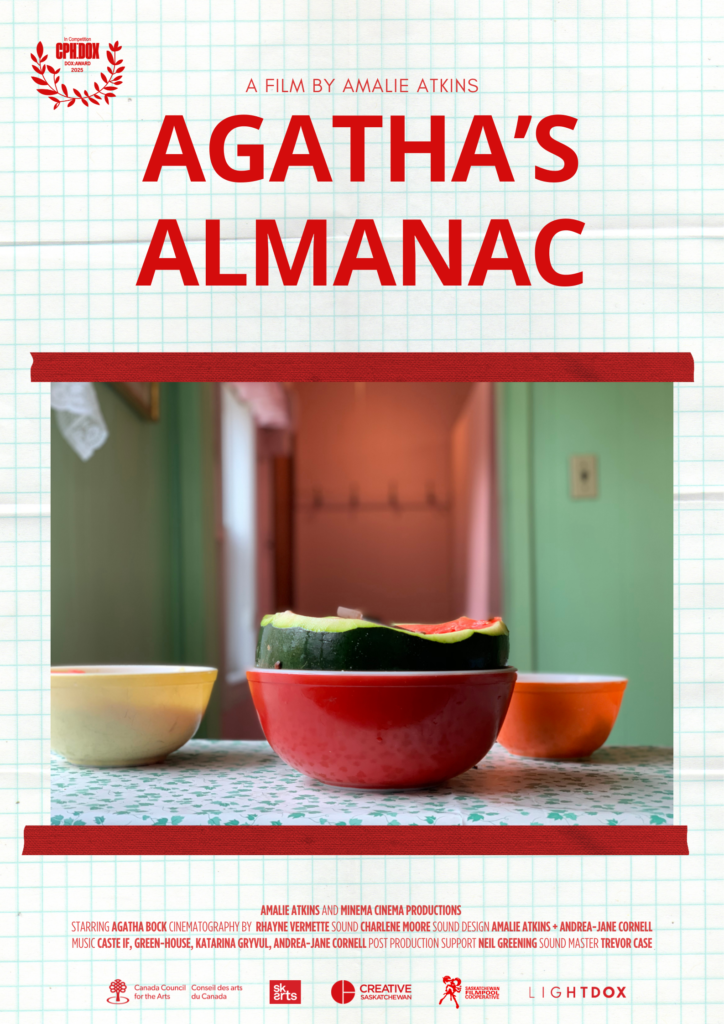
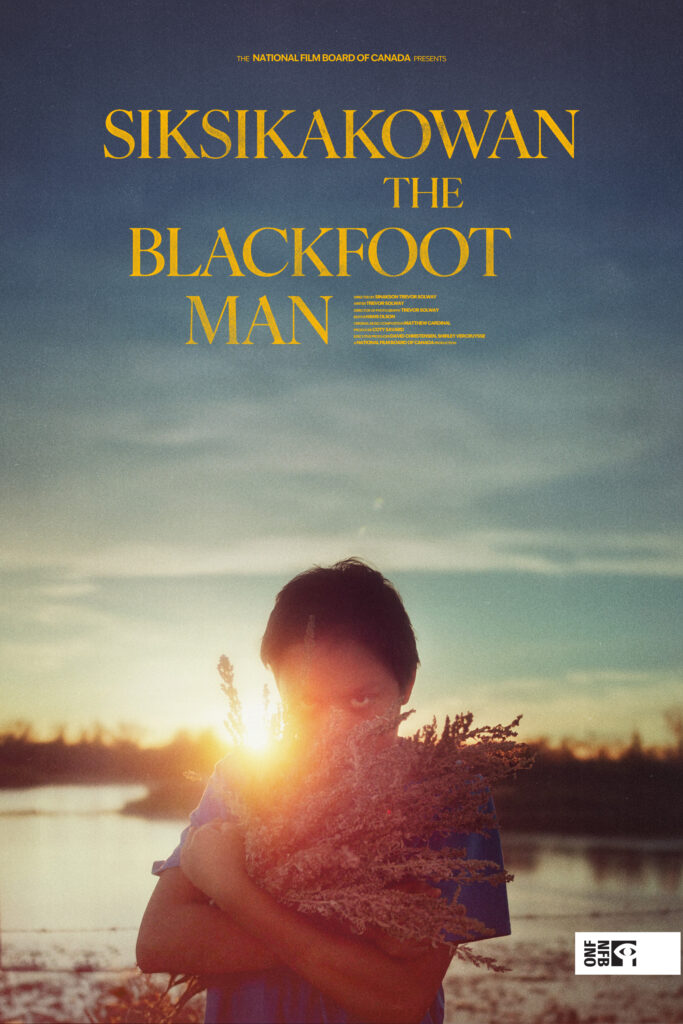
Siksikakowan: The Blackfoot Man (2025)
Directed by Sinakson Trevor Solway
Siksikakowan: The Blackfoot Man unfolds as a series of scarred, fragmented impressions—brief scenes and statements from Indigenous men navigating diverse spaces: hockey rinks, rodeo arenas, fighting rings, basketball courts, radio stations, hip-hop stages, and LGBTQ+ circles. The film offers no single narrative but instead sketches an emotional landscape marked by anger, sadness, violence, and unresolved pain.
Masculinity is its central thread—depicted not as strength or pride, but as a performance riddled with grief and disconnection. Tattoos, poetry, and fighting emerge as recurring modes of survival, ways to externalize rage and make visible what remains unspoken. Some sequences are too brief to fully grasp, creating a sense of frustration that mirrors the fragmentation experienced by the men themselves.
Solway juxtaposes scenes of contemporary Western culture with traditional Blackfoot rituals, exposing a cultural contrast coexistence. The result is a portrait of men who do not feel fulfilled or at peace, but who are caught in cycles of pain with few outlets for healing. It is a film of gestures, not answers—an elegy for a masculinity searching for form in the aftermath of silence. ![]() 3/5
3/5
Supernatural (2025)
Directed by Ventura Durall
Ventura Durall’s Supernatural is a deeply layered and quietly mesmerizing meditation on memory, belief, and the enduring complexities of family legacy. What begins as a personal investigation by actress Anna Alarcón into the mystical legacy of André Malby—an enigmatic French healer who became a cult figure in Spain—soon transforms into the emotional journey of Malby’s estranged son, Mathurin, a rational-minded physician who returns from the U.S. to confront the myth and man of his father.
As the film delicately unfolds, it resists easy categorization, exploring the fine line between spiritual power and illusion. Through archival footage, interviews, and intimate encounters, Durall paints a portrait of a man who touched many lives, yet remained elusive to his own son. Mathurin, anchored in science and skepticism, questions everything—until a revelatory family story from his aunt reframes his father’s past and subtly shifts his understanding. Meanwhile, Anna’s parallel quest gives voice to the emotional pull of belief and the quiet ways the supernatural inhabits our everyday lives.
Elegantly paced and rich in atmosphere, Supernatural is a quietly powerful and intimate film of layered revelations. Unfolding gradually, it becomes not only a dual journey of remembrance and reconciliation but also a profound meditation on belief, legacy, and identity. By the end, the transformation of its two central figures—Anna and Mathurin—feels both personal and universal, giving the documentary the weight of a genuine odyssey of self-discovery. As they search for meaning in the traces left behind, the film gently turns its gaze toward us and asks: Is the supernatural a distant target—or simply the bow we use to aim at what we cannot fully explain or control?  (4.8/5)
(4.8/5)
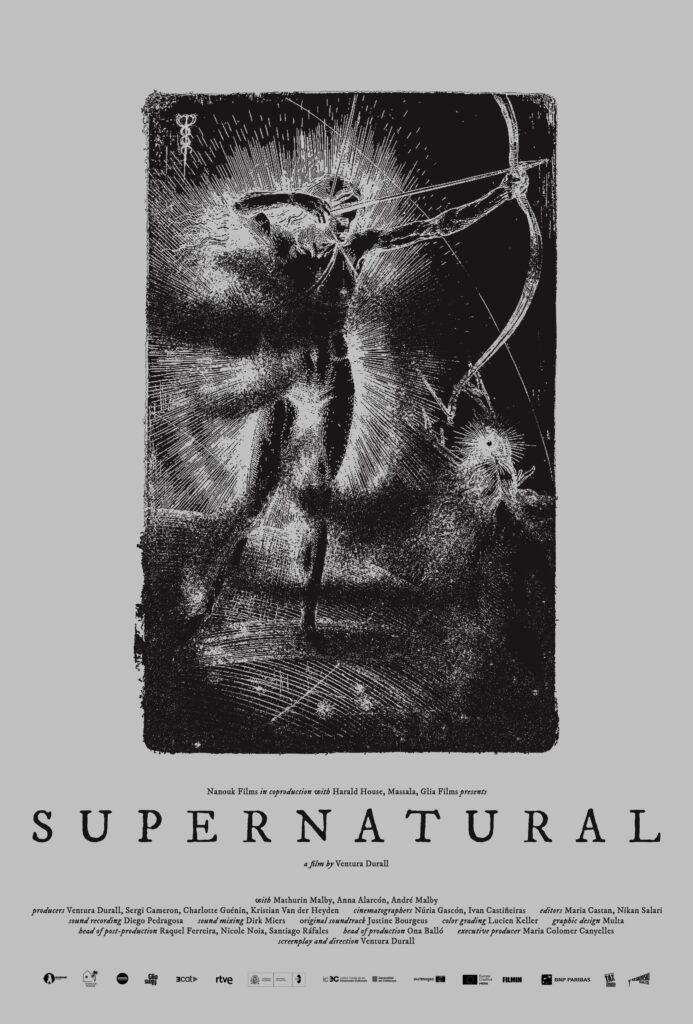
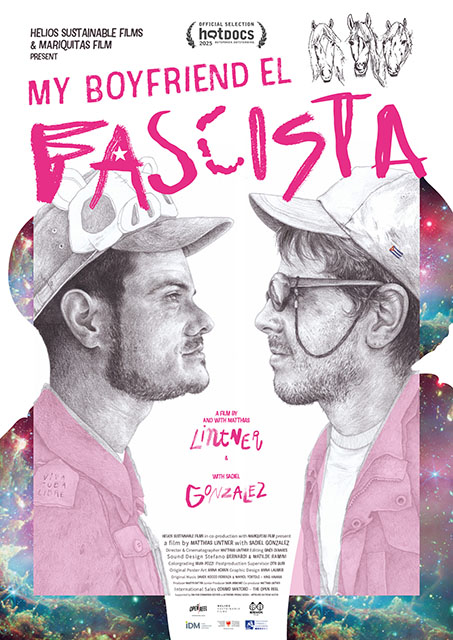
My Boyfriend the Fascist (2025)
Directed by Matthias Lintner
In My Boyfriend the Fascist, director Matthias Lintner turns the camera inward, crafting an unexpectedly personal and sharply ironic portrait of ideological intimacy. At the heart of the film is Sadiel, a Cuban exile living in Italy who, despite being gay and politically displaced, fervently supports Italy’s far-right movement and its now–Prime Minister Giorgia Meloni. Through a series of intense, often contradictory political debates, the film dissects the paradoxes of identity, belief, and love across ideological lines.
What elevates the documentary is not so much Sadiel’s provocative declarations—equating communism with fascism, or positioning himself as a liberal in defense of human rights—but Lintner’s quietly expressive presence. His facial reactions—bewildered, amused, at times silently exasperated—form the film’s true emotional and political commentary. Clever editing further deconstructs Sadiel’s discourse, revealing it less as a coherent ideology than as a kind of performed rhetoric, staged for both camera and partner.
My Boyfriend the Fascist is less a portrait of a man than a self-reflexive exploration of political dissonance in intimate relationships. It is a timely, often darkly humorous meditation on how the personal is never free from the political—even, and especially, in love. ![]() 3/5
3/5
Ai Weiwei’s Turandot (2025)
Directed by Maxim Derevianko
Ai Weiwei’s Turandot offers a behind-the-scenes look at the artist’s ambitious yet uneasy foray into opera with his reimagining of Puccini’s Turandot—a Western fantasy of the East reinterpreted by one of China’s most internationally known dissident voices. Yet while the premise holds great promise, the documentary struggles to find its footing, approaching more to a promotional featurette than a enlightening, reflective or provocative piece.
Despite Ai Weiwei’s thoughtful reflections on exile, cultural misrepresentation, and artistic freedom—mirrored in Turandot‘s own themes of displacement and power—the film remains hampered by a lack of narrative clarity and an overreliance on insular voices–quite repetitive ones. The absence of external perspectives, coupled with an over-saturation of lofty commentary from producers and collaborators, blurs rather than sharpens its focus. The documentary’s aesthetics remain static, dominated by talking heads and uncontextualized footage of Ai Weiwei previous works, with little sense of progression or critical distance.
Ultimately, Ai Weiwei’s Turandot fails to capture a fascinating tension—between East and West, politics and performance—and fully orchestrate it into a compelling cinematic composition. ![]() 2.5/5
2.5/5
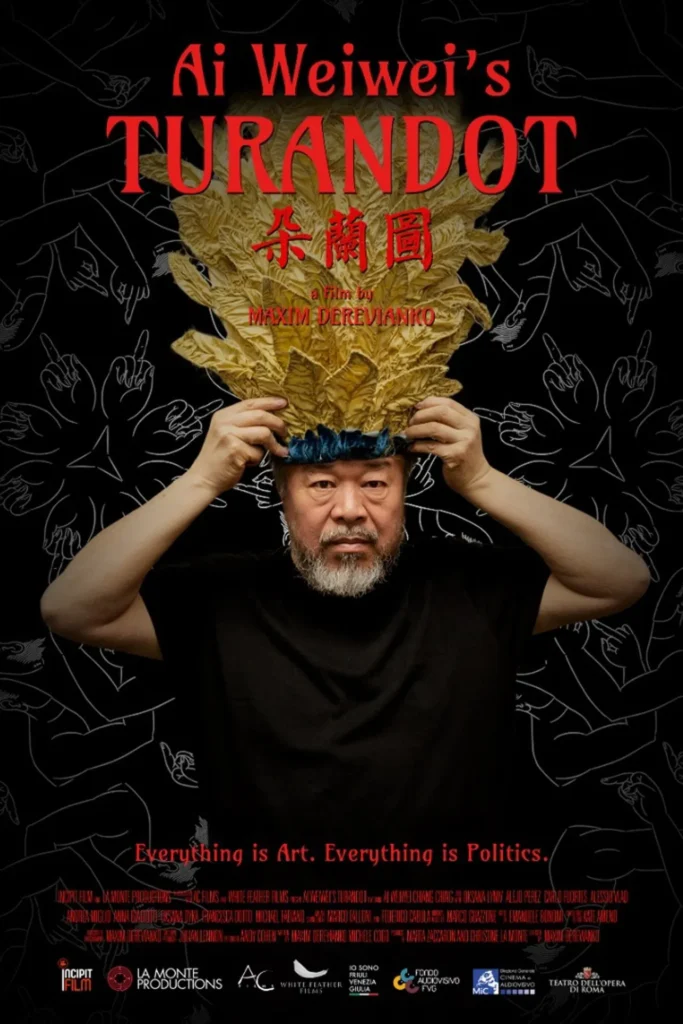
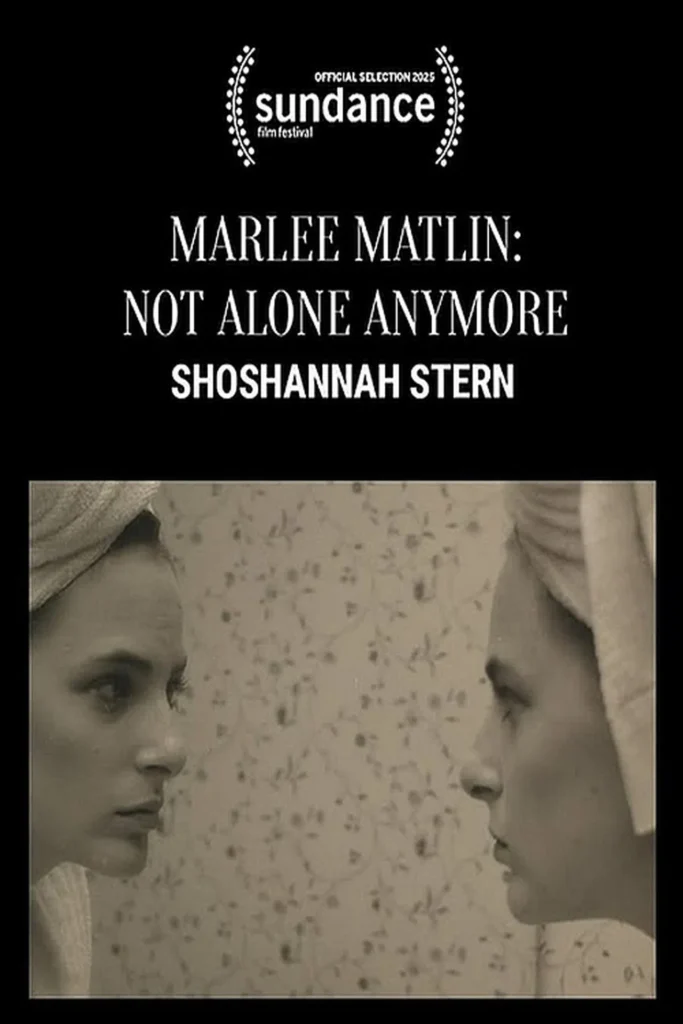
Marlee Matlin: Not Alone Anymore (2025)
Directed by Shoshannah Stern
Directed with sensitivity and insider insight by Shoshannah Stern—herself a deaf filmmaker—Marlee Matlin: Not Alone Anymore is a moving and meticulously crafted portrait of the Academy Award-winning actress whose life and career have been inseparable from the broader fight for deaf rights and visibility. More than a conventional biography, the film weaves Matlin’s personal journey—including her struggles with addiction and painful revelations about abuse—into a broader historical and political narrative of the deaf community over the past five decades.
What distinguishes the film most, however, is its immersive audiovisual approach. In scenes conducted entirely in sign language, the absence of spoken dialogue draws attention to the layered texture of communication—facial expressions, mouth noises, and the physicality of signing—transforming closed captions (in yellow capital letters at the top of the screen for sound cues) and subtitles (in various colours for dialogue) into more than just accessibility tools: they serve as intentional aesthetic strategies that underscore the film’s sensory and cultural depth. The film’s thoughtful use of colored and layered captions and , combined with Stern’s nuanced direction, offers a rare sensory experience that foregrounds the centrality of sign language to deaf identity, agency, and community.
Ending with Matlin’s expressive sign-language rendition of Billy Joel’s “My Life” over the credits, Not Alone Anymore is more than a tribute. The documentary is a quietly radical film that insists on the essential role of sign language—not only as communication, but as cultural expression, autonomy, and dignity—reminding both deaf and hearing audiences what true accessibility and representation can look like. ![]() (4/5)
(4/5)
Coexistence, My Ass! (2025)
Directed by Amber Fares
In Coexistence, My Ass!, director Amber Fares offers a bold and unflinching portrait of Noam Shuster-Eliassi—a peace activist turned stand-up comedian who confronts the Israeli-Palestinian conflict with biting satire and a deeply personal sense of urgency. With two decades of experience in diplomacy and human rights work, Shuster-Eliassi brings a rare insider-outsider perspective, blending wit with righteous indignation. Her comedy dares to speak uncomfortable truths: “Democracy is not only for Jews,” she declares, challenging both nationalism and the sanitized industry of feel-good “coexistence.”
The film’s first half is sharp and rhythmically engaging, interweaving her stage performances with trenchant social critique. Yet as the war escalates, comedy yields to tragedy, slowing the film’s pace and shifting its tone. While this narrative rupture reflects the real-world collapse of hope, it also blunts the film’s earlier momentum. Still, Fares’s documentary remains an eye open and timely reminder that laughter can open doors—but the harder task lies in transforming it into action.
However, the film ultimately leans too closely into Noam’s perspective, echoing her assertion that coexistence is not complex or complicated but painfully simple—without sufficiently interrogating or challenging this stance. ![]() (4/5)
(4/5)
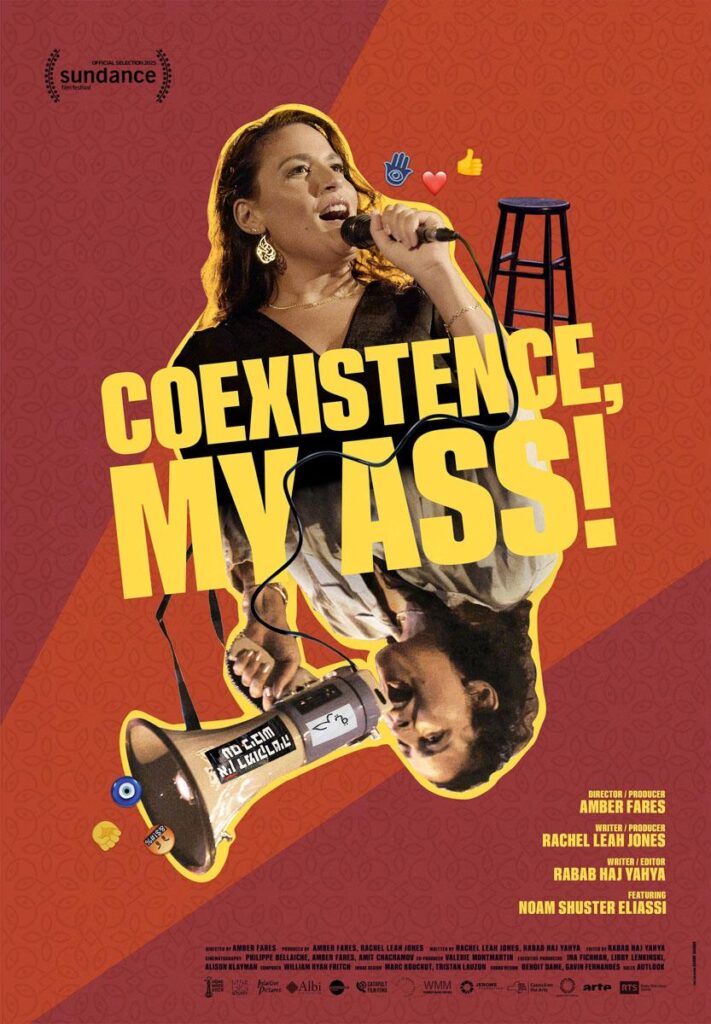
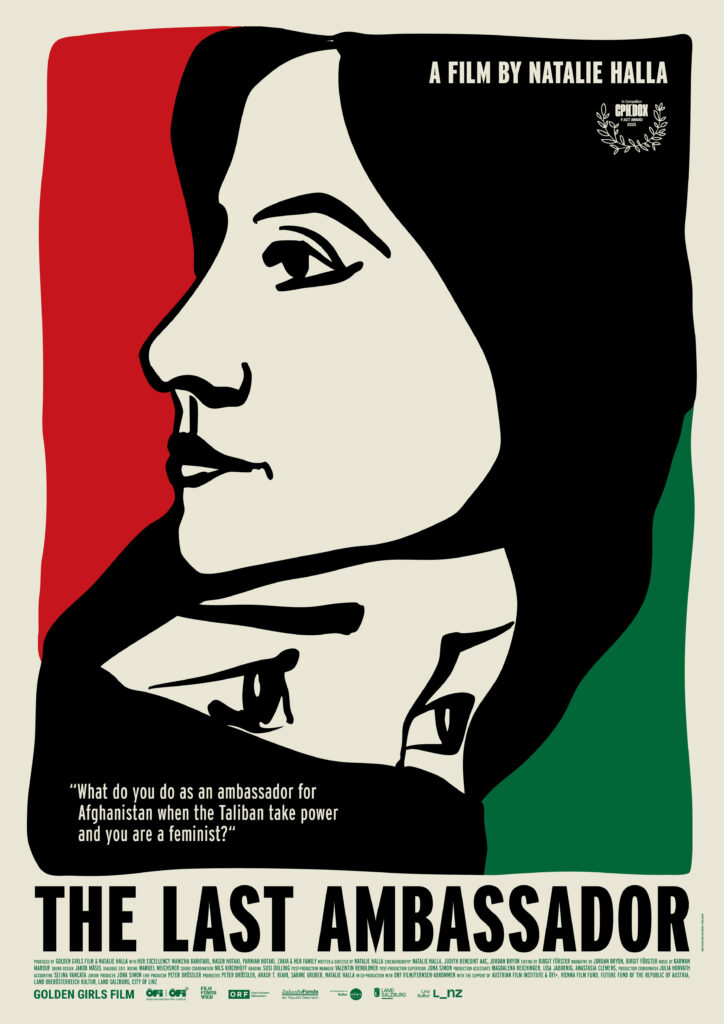
The Last Ambassador (Austria, 2025)
Directed by Natalie Halla
In The Last Ambassador, Natalie Halla crafts a dignified and poignant portrait of Manizha Bakhtari, Afghanistan’s ambassador to Austria, whose 1,291 days of resistance from her embassy in Vienna offer a rare and powerful vantage point on the collapse of her country under Taliban rule. With remarkable elegance and journalistic precision, the film documents Bakhtari’s unwavering defiance of a regime that systematically erases women from public life, making her diplomatic stance political and existential.
Halla’s direction combines access to intimate diplomatic moments with layered archival material, producing a narrative that moves seamlessly between personal and geopolitical dimensions. The film exposes the failures of international policy, particularly in the wake of the Trump administration’s withdrawal from Afghanistan, while honouring the resilience of Afghan culture through the poetry of Wasef Bakhtari’s father, a legendary literary figure in exile.
One of the most compelling titles at Hot Docs 2025, The Last Ambassador is a powerful reminder of Bakhtari’s own words: “peace is not the absence of war, but the presence of justice.”  (4.5/5)
(4.5/5)